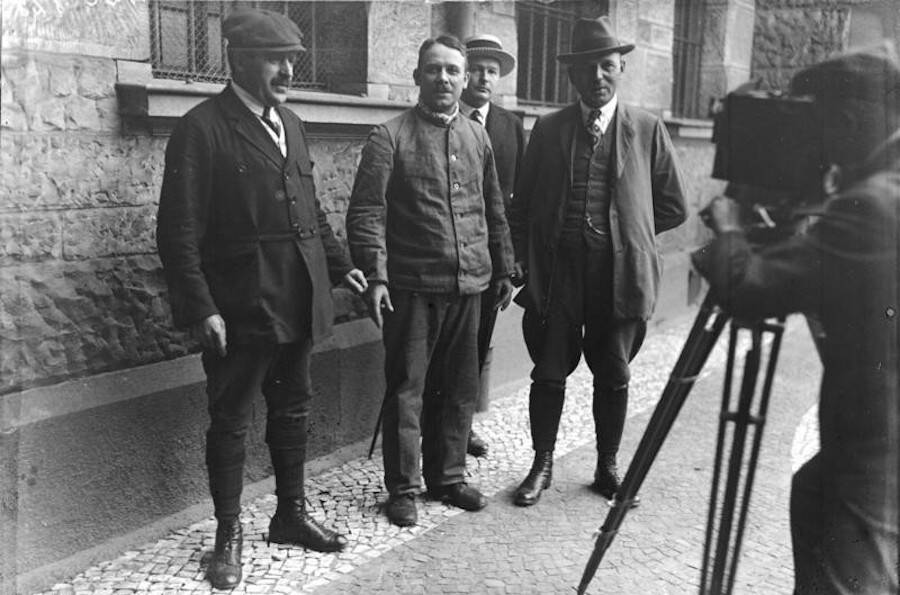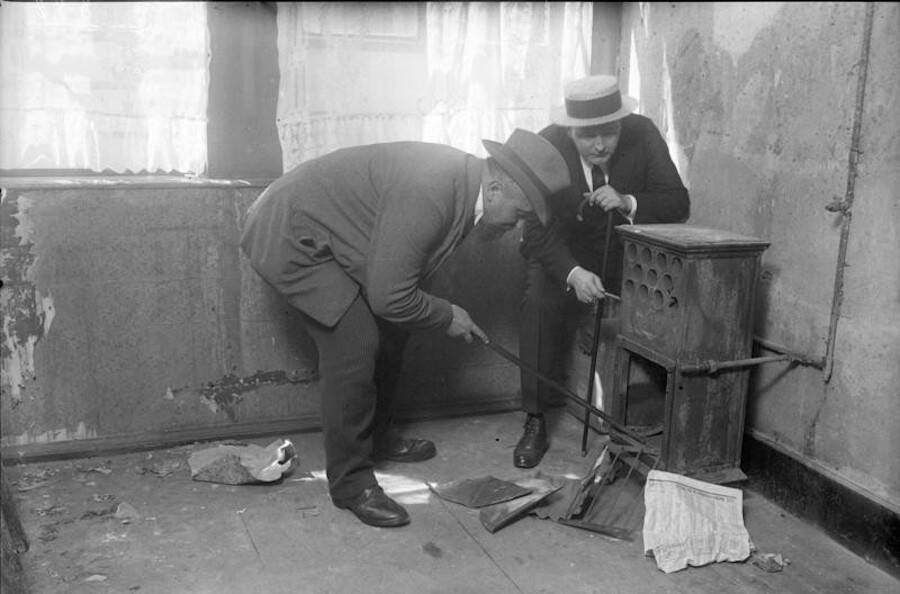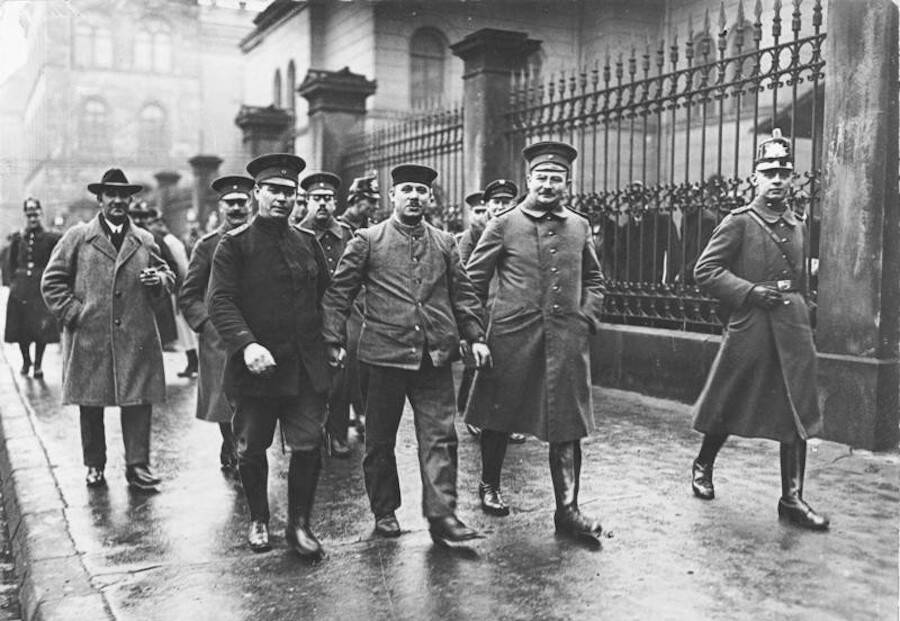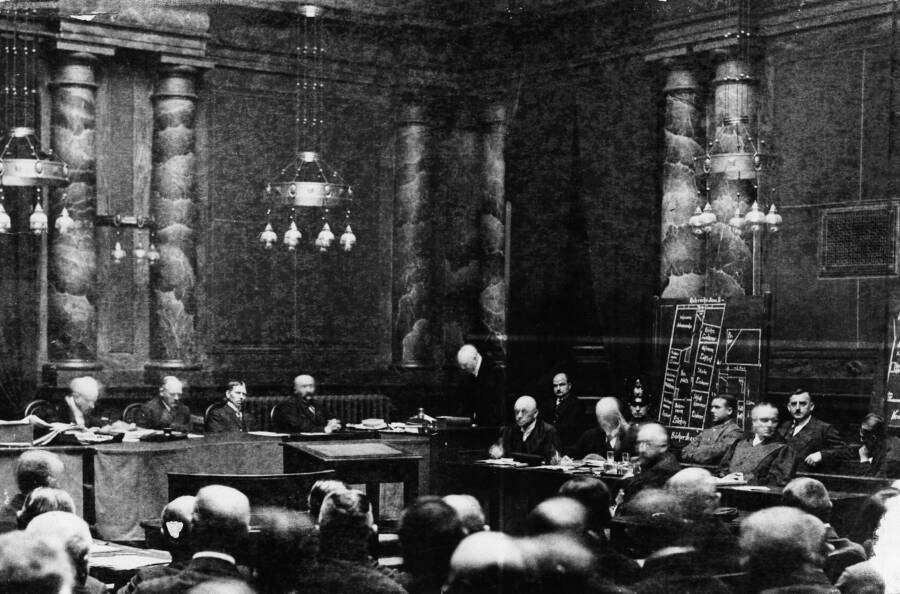
For six years, Fritz Haarmann used his position as a police informant to hide in plain sight while he carried out at least 24 grisly murders that earned him the nickname of the “Vampire of Hanover.”
In the 1920s, Fritz Haarmann was known as a successful seller of secondhand clothes and was beloved by housewives for his endless supply of cheap meat — until they learned he harvested both of his products from slain runaway boys.
The people of his native Hanover all thought Fritz was something of an oddball, but friendly and certainly harmless. Even the police liked him, and he worked for them as an informant while he carried out a horrifying killing spree right under their noses.

Wikimedia Commons
Once his crimes were discovered, Haarmann became notorious as the “Vampire of Hanover” who killed his victims with a “love bite” that went right through the windpipe. Also called the “Butcher of Hanover,” he ultimately confessed to nearly 30 murders, but police suspected he killed dozens more.
Fritz Haarmann’s Troubled Early Life
Born on October 25, 1879, to a morose father known as “Sulky Olle,” Friedrich Heinrich Karl Haarmann was doted on by his invalid mother. The youngest of six, he loved playing with dolls, wearing dresses, and avoiding other children, especially boys.
In an effort to force his son to toughen up, Olle packed young Fritz off to the military school in the southern German city of Breisach at the age of 16. Although the boy enjoyed his time there, after just a few months at school he discovered that he had epilepsy.
Dismissed from school due to his condition, he worked in his father’s cigar factory for a year before committing his first crime: sexually molesting young boys. Captured and charged by the police, he was consigned to a mental asylum. After just six months in the asylum, he escaped and crossed the border to Switzerland.

Wikimedia CommonsFritz Haarmann never hid his crimes. In fact, he cheerfully helped the police throughout their investigation and was surprised when they charged him with the murders of only 27 of his victims.
While in Switzerland, he became engaged to a young woman named Erna Loewert. However, the short-lived engagement fizzled when she got pregnant and he returned to Germany in 1900 to complete his compulsory military service.
Due to his epilepsy and probable mental illness, Haarmann was hospitalized for four months in 1901 and dismissed from the military in 1902. After his discharge, his father made repeated attempts to have him thrown back in the asylum permanently, but Fritz managed to evade him every time.
After leaving the military, Fritz Haarmann first got by on his pension, which increased in 1904 when he was finally classed as disabled. Over the next decade, he supplemented his pension with petty crimes, burglaries, and cons.
Unfortunately for the teenage boys of Hanover, Haarmann’s crimes would escalate dramatically following the end of World War I.
The First Murder By The ‘Butcher of Hanover’

Wikimedia CommonsIn 1925, police finally investigated Fritz Haarmann’s home, including the stove which he used to burn some of his victims’ body parts.
By 1913, the police were fed up with his repeated crimes and threw the book at Haarmann. Convicted of burgling a Hanover warehouse, he was tossed in jail for five years, allowing him to sit out World War I.
In jail, Haarmann met 24-year-old pimp Hans Grans, with whom he fell quickly in love. Upon their release, they took up residence together.
Paroled in 1918 as the German Empire was crashing spectacularly, he immediately took up two jobs. One was with a gang of smugglers; the other was as an informant for the Hanover police, a position that would play a huge role in his next project.
In September 1918, 17-year-old Friedel Rohe ran away from his home, disappearing into the back streets of Hanover. When Rohe’s father set out to find his son, he learned that young Friedel had been friendly with Haarmann, who often took young boys over to his apartment for a bit of fun.
Yet when Rohe’s father brought this clue to authorities, police were reluctant to interfere with their most valuable spy. He persisted in his requests, and eventually, they agreed to visit Haarmann.
There, they found Fritz Haarmann in bed with a 13-year-old boy, but no sign of Friedel. All they could do under the laws of the time was arrest Haarmann for indecency with a minor.
Haarmann later pointed out that the police couldn’t have searched too thoroughly. Friedel Rohe’s severed head had been tucked away behind the stove the whole time they were there.
Fritz Haarmann’s Killing Spree

Wikimedia CommonsPolice outside the home Fritz Haarmann and Hans Grans shared at Rote Reihe 2 in Calenberger Neustadt, Hanover.
Fritz Haarmann was already well-known as a black-market butcher, popular among people of the area for his friendliness and his irresistibly affordable meat. By 1919, Germany was in dire economic straits, and many families struggled to keep food on the table.
Throughout the early 1920s, Haarmann spent much of his time loitering around Hanover’s train station, scouting for teenage boys to coax home with promises of food and comfort. Thousands of children were running away from home at this time due to postwar hardships, so he had plenty of victims to choose from.
After feeding his victims, Haarmann would kill them by biting through their windpipes in what he grotesquely called his “love bite,” before sexually molesting their dead bodies. Finally, he would dismember them, grinding their flesh into sausage meat or chopping them into cutlets to be sold as “beef” or “pork.”
After butchering his victims, he dumped their remains into the nearby River Leine.

Wikimedia CommonsPolice were finally forced to arrest Fritz Haarmann after years of ignoring his activities.
For six years, while the police turned a blind eye to their favorite informant’s activities, Fritz Haarmann is believed to have murdered over 50 boys, often chosen by Grans out of jealousy of some item of clothing of theirs.
He became successful selling their clothes and their flesh, even as more and more parents descended on the city stalked by the “Vampire of Hanover,” desperate to find their vanished children.
Discovery and Trial
In May of 1924, the police were forced to turn their attention to Haarmann when children discovered a skull on the banks of the Leine. After several more skulls and skeletons were found, the River Leine was dragged, uncovering the bodies of at least 22 teenage boys or young men.
The city of Hanover panicked, and suspicions turned to Haarmann thanks to his reputation for bringing runaway boys to his apartment. Due to his status as a favorite informant, the Hanover police were deemed unfit to investigate Fritz Haarmann. So, two detectives from Berlin arrived on the scene to take over the investigation.

Ullstein bild via Getty ImagesDuring his trial, Haarmann eagerly answered prosecutors’ questions even while he insulted witnesses, sneered at the court, and smoked cigars before receiving his death sentence.
The Berlin detectives soon found Haarmann in a dark corner of the train station, attacking a teenager. He was thrown in jail while they went to search his apartment, much more thoroughly this time.
Inside was a nightmarish scene. The walls and floor were stained all over with blood while more than 100 pieces of victims’ clothing were found.
In custody, the Vampire of Hanover was only too happy to confess to his crimes. When asked how many he’d killed, he casually replied “Thirty or forty, I don’t know.” Later, he said he probably killed between fifty and seventy boys.
However, police were only able to identify 27 of his victims and were unable to find the dozens of others. Haarmann was charged with multiple counts of murder and a trial date was quickly set.
In court, Haarmann smoked cigars and insulted everyone present. Once, looking at a photo of one missing boy, he shouted at the boy’s grieving father that he could never have had anything to do with the child as he was far too ugly.
Found guilty of 24 out of the 27 murders he was charged with, Haarmann was swiftly sentenced to be decapitated by guillotine on April 15, 1925.
His lover, Grans, who had often emotionally blackmailed Haarmann into murdering particular children, was sentenced to life in prison, but the sentence would later be commuted to just 12 years.
Fritz Haarmann’s Gruesome Legacy
After his death, Fritz Haarmann’s head was preserved in formaldehyde and given to the medical school in Göttingen. In 1925, the remains of his victims discovered in the River Leine were buried in a mass grave in Stöckener Cemetery.
Though the people of Hanover were eager to get past Haarmann’s horrifying murders, his crimes inspired the German expressionist filmmaker Fritz Lang’s classic 1931 thriller M. In M, both the police and criminals in a large German city hunt for a serial killer who preys on young children.
Fritz Haarmann and Hans Grans grisly crimes had one other tragic effect, though. Although homosexuality was illegal in Germany at the time, it had been largely tolerated for some years.
With the lurid stories of Haarmann’s sexual violence and Grans’ sickening cruelty, a wave of homophobia swept through the country. As the hearts of most Germans hardened towards the plight of gay men, the path was cleared for the later campaign of murder against homosexuals carried out by the Nazis.
Hans Grans, however, survived to a ripe old age, dying in Hanover in 1975. Decades later, in 2015, the medical school in Göttingen tired of storing Fritz Haarmann’s preserved head and cremated it, thus doing away with the last traces of the “Butcher of Hanover.”